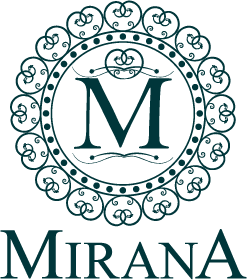Indian Jewelry, Caring Guides, Style
Tips To Care For Your Traditional Indian Jewelry
Traditional Indian jewelry, with its intricate designs and cultural significance, holds a special place in the hearts of many. Whether it is an heirloom passed down through generations or a modern creation inspired by classic designs, maintaining and preserving these artificial jewelry is essential to ensure their longevity. Here are some tips and guidelines to help you take care of your traditional Indian jewelry.
Regular Cleaning
To maintain the shine of your traditional Indian jewelry, it is important to clean them regularly. Use a soft cloth to wipe them after every use to remove oil, sweat and dirt. For deep cleaning, a mild soap solution can be used. Avoid harsh chemicals as they may damage delicate materials. Use a soft brush to clean difficult areas, making sure you are gentle to avoid scratching the surface.
Proper Storage
Storing your traditional Indian jewelry properly is very important to prevent it from tarnishing. Always store your jewelry in a dry place. Use separate pouches or boxes for each jewelry to prevent them from scratching each other. Consider using anti-tarnish strips in your jewelry box to prevent silver jewelry from tarnishing. For artificial jewelry with intricate designs, padded storage boxes can provide extra protection.
Avoid Exposure to Moisture and Chemicals
Moisture can be harmful to traditional Indian jewelry. Remove your jewelry before swimming, showering or doing any water-related activity. Similarly, avoid exposing your jewelry to chemicals found in perfumes, lotions and hair sprays. These substances can tarnish the metal and cause gemstones to fade.
Regular Inspections
Inspect your traditional Indian jewelry regularly for wear and tear. Check for loose stones, worn clasps or bent hooks. Addressing these problems promptly can prevent more serious damage. If you notice any problems, it is best to take the jewelry to a professional jeweler for repairs.
Professional Cleaning and Maintenance
While regular home cleaning is important, professional cleaning should be done at least once a year. Jewelers have special tools and solutions that can clean your traditional Indian jewelry more thoroughly without causing any damage. They can also check and repair any damage you may not have noticed.
Handling with Care
When handling your traditional Indian jewelry, make sure your hands are clean and dry. Oils and dirt from your fingers can transfer to the jewelry, causing it to fade. Handle each piece carefully, especially jewelry that has intricate designs and delicate settings.
Avoid Wearing Jewelry During Physical Activities
Physical activities, such as playing sports or lifting heavy items, can put unnecessary strain on your traditional Indian jewelry. Remove your jewelry before engaging in these activities to avoid damaging them. Everyday chores such as cooking and cleaning can also expose your jewelry to harmful substances and physical damage.
Special Care for Different Materials
Different materials used in traditional Indian jewelry require different care:
– Gold: Gold jewelry should be kept away from chlorine and other harsh chemicals. Clean gold jewelry with a solution of warm water and mild detergent.
– Silver: Silver tarnishes quickly. Store silver pieces with an anti-tarnish strip and clean them with a silver polishing cloth.
– Kundan and Polki: These traditional styles feature uncut diamonds and intricate settings. Avoid using water on these pieces as it can weaken the adhesive used in the setting. Clean them with a dry, soft cloth.
– Gemstones: Different gemstones have different levels of hardness. Clean them with a soft, damp cloth and avoid harsh cleaning solutions.
Insurance for Valuable Pieces
For traditional Indian jewelry with high value, consider insuring them. This provides financial protection in case of loss, theft or damage. Make sure your insurance policy covers the entire value of the jewelry, including the increase in value over time.
Historical and Sentimental Value
Traditional Indian jewelry often has historical and sentimental value. Items passed down through generations are not only valuable in monetary terms, but are also family heirlooms. Make sure you educate your younger family members about the importance and care of these items to preserve their legacy.
Traditional Indian jewelry is not just an accessory; it is a testimony to cultural heritage and family history. Proper care and maintenance is essential to maintain its beauty and significance. By following these tips and guidelines, you can ensure that your beloved artificial jewelry remains in excellent condition for years to come, so that it can be handed down to future generations.
Remember, every piece of traditional Indian jewelry is unique and deserves special attention. Handle your artificial jewelry with the care and respect it deserves, and it will shine, adding a touch of elegance and tradition to every occasion.



